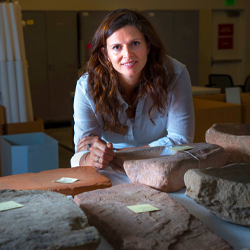Holocene subalpine forest-parkland dynamics in Big Cottonwood Canyon, Wasatch Mountains, Utah, USA
 Authors:
Authors:
David Rhode, Lisbeth A Louderback, Sandy O Brugger
Abstract:
Understanding long-term responses of subalpine forest-parklands to Holocene climate variability in local context is critical for better managing those ecosystems under future climate change. Available records suggest that western North American subalpine forest-parkland ecosystems responded to Holocene climate in various ways at different places. Here we present a Holocene record of upper montane forest-parkland dynamics from Silver Lake in Big Cottonwood Canyon, Wasatch Range, on the Great Basin’s eastern margin. Our results show that at the end of the Younger Dryas, Silver Lake was surrounded by open Pinus/Picea parkland mixed with Artemisia subalpine steppe. By ~9.0 cal ka BP Picea began to expand in response to early Holocene summer warming and enhanced winter moisture. Picea-dominated forests prevailed from ~8.0 to 5.0 cal ka BP, after which time a more open Picea parkland developed. By ~3.5 cal ka BP Pinus increased under cooling conditions, and Picea gradually rebounded to form the mixed conifer forest present today. The Silver Lake long-term record of moderate shifts within an upper montane ecosystem is consistent with other regional sites in the timing of major vegetation changes reflecting large-scale climatic forcings, but distinct in response to local factors including the importance of enhanced lake-effect snowpack and the absence of competing lower montane Pinus. These local factors may help account for the long-term stability of Picea-dominated forests in the area.
This publication can be viewed here
